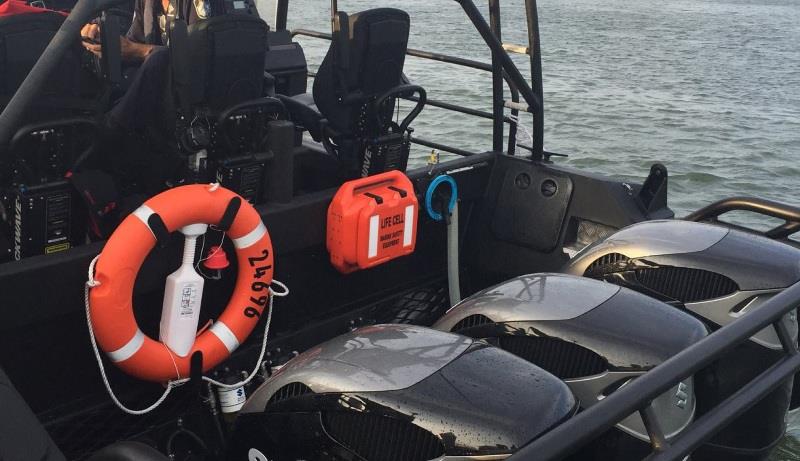
Life Cell in the commercial sector
by Life Cell Marine Safety 20 Jul 2018 02:01 AEST

Life Cell in the commercial sector © Life Cell Marine
Not only is the recreational boating sector starting to recognise the importance of Life Cell, the commercial industry are also recognising its value.
Law enforcement agencies are mounting Life Cells on their vessels and many boat builders are starting to include Life Cell as standard equipment on their new vessels.
We are contacted regularly by marine surveyors questioning if and how Life Cell can be used in the commercial sector, so we have put this newsletter together to clarify its application.
Life Cells meet the standards for National Standards for Commercial Vessels in three distinct areas which are outlined below.
Chapter 4.10, Section C7A - For storage of safety equipment including pyrotechnics and smoke signals
Chapter 4.10 of NSCV section C7A requires pyrotechnic and smoke signals to be stowed in a buoyant watertight container, fitted with a handle or lanyard. The container shall be clearly and permanently marked as to its contents. For all classes of vessel it shall be readily accessible and on Class 3 vessels mounted in a float free position.
Life Cell meets all of the criteria above and any model can be used for this purpose. A commercial model (with grab lines attached) is not required if using Life Cell only for the purpose of storage.
NOTE: All Life Cells are considered a Buoyant Storage Device as specified in the recent GES 2017/09.
Chapter 5.3, Section C7A - As a buoyant appliance
Chapter 5.3 of NSCV section C7A requires class one, two and three vessels operating in areas D or E (partially smooth waters or smooth waters) to carry buoyant appliances.
In order for Life Cells to be considered a buoyant appliance they must be fitted with grab lines, additional reflective tape, specify number of persons they support and identify the parent vessel. The commercial models have these additional features included. Commercial models are available for the Trawlerman & Crewman. The Trailer Boat & Yachtsman (standard version) could be adapted by the user to comply in accordance with the standards outlined in Section C7A, Annex F.
The buoyant capacity of each Life Cell is listed below -
- Trailer Boat - 1 person
- Yachtsman - 1 person
- Trawlerman - 3 persons
- Crewman - 4 persons
NOTE: Life Cells cannot replace lifebuoys if required by the NSCV. They can only replace other buoyant appliances.
Part G, Schedule 1, Item 3 - Flotation device for tenders
All models of Life Cells (standard versions not commercial) meet the requirements of a flotation or buoyant device for tenders (non-survey) which is required safety equipment as specified in Schedule 1.
More information on Life Cell